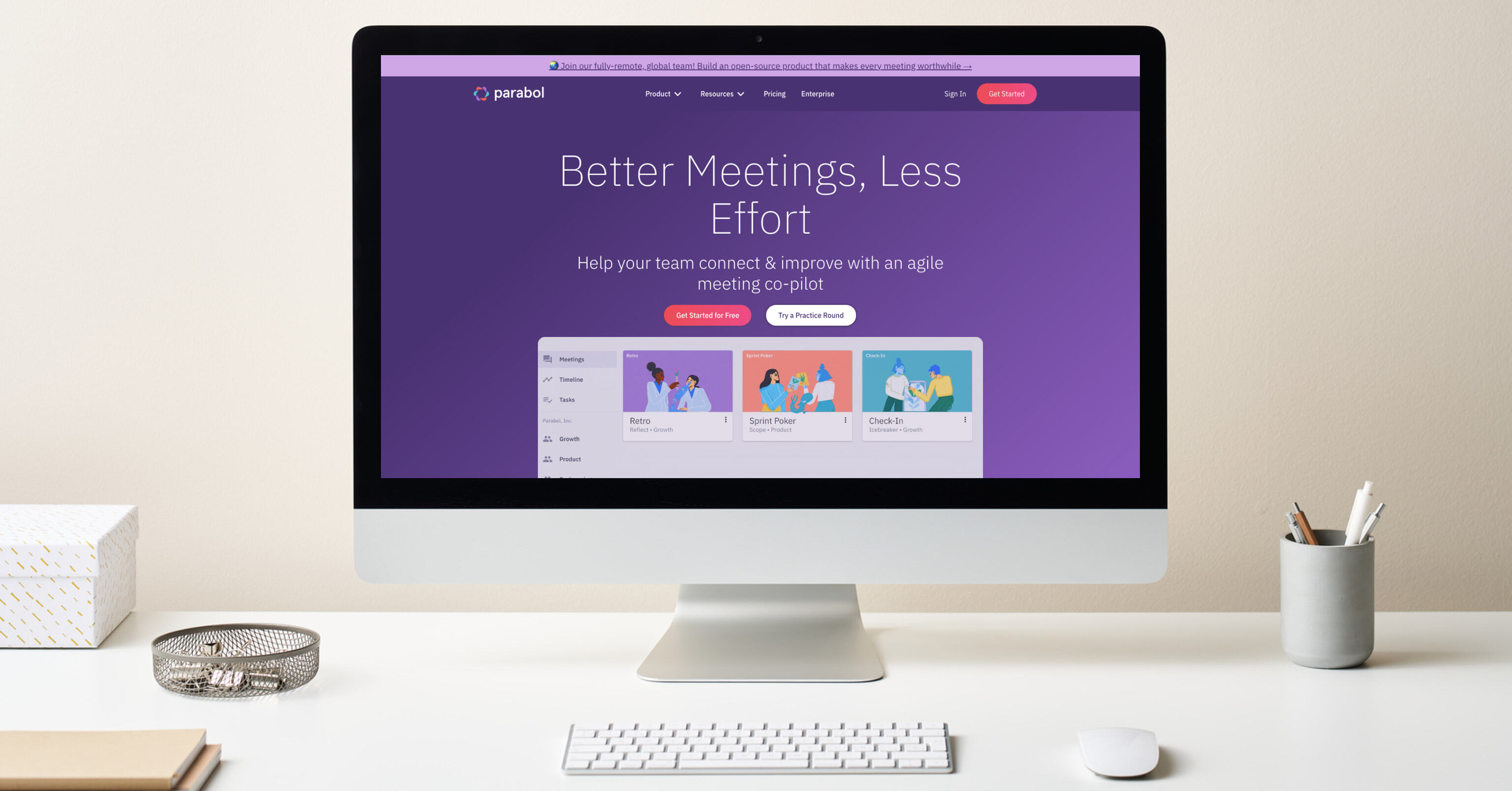Just getting a prospect to see a demo takes long enough. There’s got to be some kind of shortcut on the journey from a demo to a closed deal. Right?
Right?
Unfortunately, there’s almost always considerable effort involved in getting someone to sign off on a significant technology investment, even if it’s a referral from an existing customer. According to research from HockeyStack, the average close rate within B2B SaaS sits at just 21%. At least some portion of the majority of deals that didn’t work out involved a demo.
It may be true that seeing is believing, in other words, but believing doesn’t always translate into sales. A prospect who agrees to a demo is a good sign, but it’s only one step in a longer buying process.
What tends to happen after the demo involves fielding a range of questions, overcoming objections, and providing additional details that will satisfy unseen members of the buying committee. This is why SaaS marketing teams need to arm prospects (and their firms’ sales teams) with content that will fill in these gaps and boost win rates.
The critical piece is treating every asset you develop for this journey as a prompt to move prospects along. Instead of the old adage that “content is king,” in this case, content is a conversation—a set of responses to all the fears, uncertainties, and doubts a prospect may have.
Examples of post-demo content to create (or improve)
Imagine a site visitor who becomes a lead after reading a blog post that took them to a form-fill to get an in-depth ebook about a challenge they’re facing. After chapters of helpful insight, the ebook mentions your firm’s platform or solution.
At this point, one of three things could happen:
- They’ll respond to the ebook’s call-to-action (CTA) and reach out to see a demo.
- They’ll get passed on to a rep who reaches out to see if they’d like to see a demo.
- They do nothing and ignore the rep.
Gartner research has found the average number of vendor engagements—including demos and free trials—has dropped from 3.2 to just 2.5. If you get the go-ahead to do a demo, you’re already miles ahead of the competition. So plan ahead by putting yourself in their place and recognizing the content that may immediately follow the demo. The most common objections will include the following:
“It’s too expensive.”
This could simply be an attempt by your prospect to see how open you are to negotiating on price. It could represent the truth about their budget. It can also mean they simply aren’t seeing the full value and potential return on investment. An ROI calculator can help here, especially if it’s featured on a landing page or site section that breaks down the positive outcomes your existing customers have already experienced once they’ve deployed your solution.
There’s also a growing school of thought that B2B SaaS pricing should be more transparent. There’s a great post on Growth Unhinged that distills the best practices in creating a great SaaS pricing page based on a review of more than 440 examples.
“This is too complicated.”
No one wants a SaaS purchase to open a Pandora’s box of integration headaches. Many B2B SaaS firms are already strained in terms of resources, and the demo might suggest it will take a significant lift before the benefits kick in.
If you offer professional services, there should already be a section on your website that showcases how good they are. If it doesn’t, it’s time to enhance it. If you work with partners who can assist, give them enough real estate on your site to reassure prospects that there are trusted advisors they can lean on.
Otherwise, consider pages with downloadable implementation guides, explainer videos, and knowledge centers that don’t look like design was treated as a complete afterthought.
“It doesn’t have that one feature.”
Everyone’s selling a “complete solution,” but the truth is SaaS tools are always a work in progress. A demo will show your prospect what your product does, but you need to educate them just as thoroughly about what it doesn’t do, and why that either doesn’t matter or when you’ll address the gap.
Update product and solution pages to hint at where your product roadmap is headed without giving everything away. You can also emphasize how critical your existing feature set is and why it should take priority over other features a prospect is focused on. Creating a buyer’s guide could put different features into greater context and alleviate your prospect’s concerns.
If you offer integrations with your sector’s biggest and best-known platforms, you should have an easy-to-navigate site section dedicated to that, too.
“Who else has used this?”
Reps often provide testimonial quotes or at least page a few customer logos on their pitch decks, and they may talk about them during the demo, too. However a full case study can provide the additional details a prospect needs when they make a proposal internally to their boss or other stakeholders.
You can make these much more dynamic than a standard downloadable PDF. Imagine a microsite of case studies that combine text with video interviews, or even podcast-style audio content that’s easy to listen to and digest.
The content bottleneck you need to break through
The quality of that content won’t mean much, of course, if it takes an inordinate amount of time and effort to set up new web site sections, create specialized landing pages and web-based digital tools like online calculators. Buyers need information quickly, and every delay hurts your chances of converting them.
Having to turn to your firm’s engineering team, for example, means you’re taking them away from core projects like developing the platform you’re trying to sell. As you ramp up and run more targeted efforts like account-based marketing (ABM) campaigns, your content needs will likely grow, making it increasingly difficult for engineers to keep up with demand.
B2B SaaS marketers need to own this process. WordPress VIP gives you that control via integrations, plugins, and functionality to create higher-converting content types quickly and easily. Instead of chasing engineers and wondering when your ask will make it onto their to-do list, you can focus on the quality of the content and getting creative in how they’re used following a product demo.
Parabol is among the companies that has learned first-hand what a difference a truly enterprise-grade CMS makes. While content creation is an essential part of marketing its agile meeting co-pilot, Parabol’s use of HubSpot was dragging the team down at every stage. This included not only developing content but repurposing and even sharing it with the product team.
Moving to WordPress VIP has meant Parabol can now empower everyone on its team to easily create more content, which makes a huge difference in its ability to market itself and grow.
Tracking the content journey from demos to closed deals
Even as you create or enhance the content prospects will look at following a demo, you should start looking at metrics that will tell you whether it’s leading to those coveted closed deals.
Parse.ly offers this kind of capability through conversion tracking. A conversion in this case is not a purchase but a desired action such as filling out a form, signing up for email updates, or other behaviors that indicate you’re nurturing the relationship effectively. Smart Linking, which is part of WordPress VIP’s Content Helper, makes it even easier to identify and connect related content that keeps prospects engaged.
Your quest to narrow the gap between demos and closed deals is also an opportune moment to revisit your tagging taxonomy, or the way in which you’re using metadata to organize your content. Tagging by subject matter, content type, or structure could all help you benchmark the performance of your content. Tagging best practices gives you greater visibility throughout the entire buying journey.
By all means, continue to nudge leads and prospects to see a demo—they can be the most compelling “show and tell” a B2B SaaS company can do. Just remember that they’ll likely need to see, hear, and read a lot more before the deal gets done.

Shane Schick, Founder—360 Magazine
Shane Schick is a longtime technology journalist serving business leaders ranging from CIOs and CMOs to CEOs. His work has appeared in Yahoo Finance, the Globe & Mail and many other publications. Shane is currently the founder of a customer experience design publication called 360 Magazine. He lives in Toronto.
